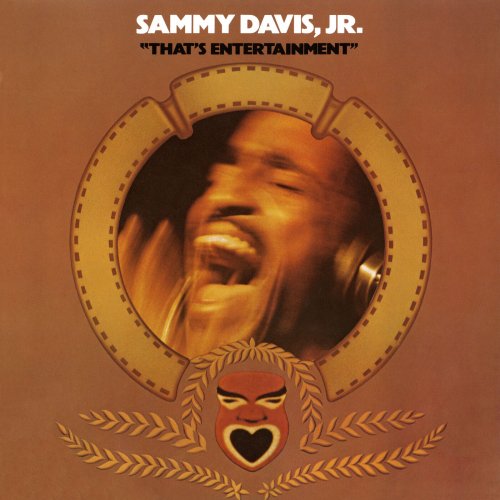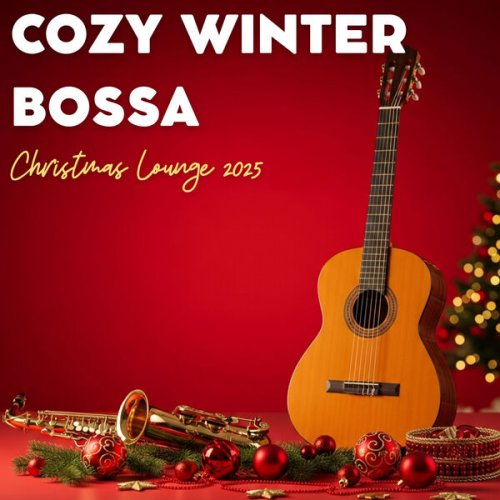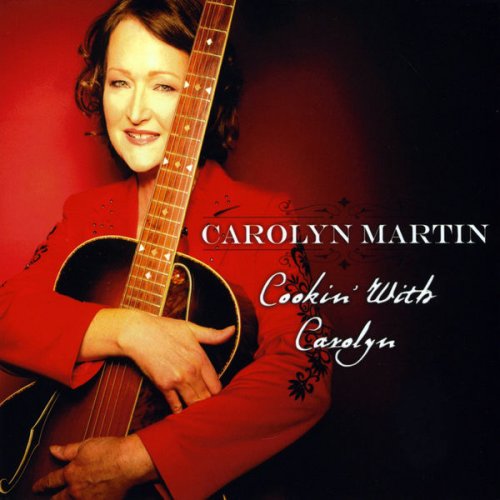Peter Richard Conte - Virgil Fox Remembered: The Wanamaker Organ (Live) (2016)

Artist: Peter Richard Conte
Title: Virgil Fox Remembered: The Wanamaker Organ (Live)
Year Of Release: 2016
Label: Raven
Genre: Classical
Quality: FLAC (tracks)
Total Time: 1:08:06
Total Size: 292 MB
WebSite: Album Preview
Tracklist:Title: Virgil Fox Remembered: The Wanamaker Organ (Live)
Year Of Release: 2016
Label: Raven
Genre: Classical
Quality: FLAC (tracks)
Total Time: 1:08:06
Total Size: 292 MB
WebSite: Album Preview
1. Peter Richard Conte – Shylock: Nocturne (Live) (04:49)
2. Peter Richard Conte – Toccata in F Major, BWV 540 (Live) (08:04)
3. Peter Richard Conte – Night Song (Live) (04:44)
4. Peter Richard Conte – Esquisses Byzantines: Tu es Petra (Live) (03:51)
5. Peter Richard Conte – The Lost Chord (Live) (05:50)
6. Peter Richard Conte – Homage to Fritz Kreisler (Londonderry Air) [Live] (06:15)
7. Peter Richard Conte – Sonata on the 94th Psalm: I. Grave (Live) (07:33)
8. Peter Richard Conte – Sonata on the 94th Psalm: II. Allegro con fuoco (Live) (04:55)
9. Peter Richard Conte – Sonata on the 94th Psalm: III. Adagio (Live) (06:26)
10. Peter Richard Conte – Sonata on the 94th Psalm: IV. Allegro (Live) (06:25)
11. Peter Richard Conte – Come, Sweet Death, BWV 478 (Live) (09:09)
Famous for his prodigious musical gifts, Virgil Fox was an unprecedented 20th-century phenomenon. He possessed dual virtuosities as a musician and as a showman. Fox developed his musical skills with a technique that imaginatively used the full range of technical innovations in pipe organ building blossoming around him, including a new level of control over rapid changes in the selection of stops and other console devices. As a showman, he engaged a persona, programming acumen, and canny advisors who helped him to woo the public. The combination brought the masses to mid-century pipe organ concerts in numbers that had not occurred for a decade or longer – not since the previously enchanted public had abandoned municipal auditorium concert organs when the popular imagination latched onto advances in the phonograph, radio, and television. Fox recaptured the audiences and the magic they had experienced in that earlier time.
John Wanamaker (1838-1922) was also a master showman. He drew patrons to his department stores by installing pipe organs they longed to hear. The enormous response to the organ installed in the new Grand Court of the palatial Philadelphia store is especially celebrated. Erected between 1909 and 1911, it was the world’s largest organ, boasting 10,059 pipes when it was built by the Los Angeles Art Organ Company for the 1904 St. Louis World’s Fair. It remained the largest for decades thereafter, because Wanamaker established an organ building workshop in the store and staffed it with as many as 40 full-time workers. They added 18,000 additional pipes by 1930.
John Wanamaker’s younger son Lewis Rodman Wanamaker (1863-1928) had talent. His instincts were for sophisticated and imported goods, and through his musical patronage he raised the level of artistic programs of the stores in New York and Philadelphia with a concert series (often with orchestra) overseen by music director and organist Alexander Russell (1880-1953). Dr. Russell became an impresario, concert manager, and the Henry Clay Frick Professor of Music and director of music at Princeton University (1917- 1935).
At age 14 in 1926, Virgil Fox played his first public concert before 2,500 people in a Cincinnati auditorium. He built his abilities on a church music career that had begun four years earlier, at age 10. While a high school student in Chicago, Fox studied three years with the German virtuoso and composer Wilhelm Middelschulte. He then attended Baltimore’s Peabody Conservatory, receiving the Artist Diploma and Church Organists’ Certificate in the Class of 1932, completing in one year a three-year course of study, and receiving the Harold Randolph Prize “for studentship and musical achievement.” He returned to Peabody in 1936 as head of the organ department and also as organist of Brown Memorial Presbyterian Church on its E. M. Skinner pipe organ.
Intuition suggests that Fox must have been drawn to the Wanamaker Grand Court organ long before his well-documented concert there for the 1939 AGO National Convention. Fox would have had ample opportunity to visit the Philadelphia organ during the ‘30s, when he was based in Baltimore. But it was in 1939 when he arranged for the Wanamaker Organ J. S. Bach’s Come, Sweet Death, taking full advantage of the unparalled String Division. More about this well known transcription appears in the Music Notes of the CD booklet.
Another known instance of Fox playing the Wanamaker Organ is a the recording made during the 1940 Republican Convention that is offered in a series of early Wanamaker Organ recordings by the Friends of the Wanamaker Organ. Some other instances include Fox’s appearance on a Lenten concert series mounted at the store during the 1950s, and at several concerts played during the 1960s.
Fox gave thousands of organ recitals throughout his career, made scores of phonograph records on major labels, primarily RCA Victor, Capitol, and Columbia, but also several others. Particularly cherished among them is a famous recording made by Fox in 1964 on the Wanamaker Organ for the audiophile Command label and currently available on CD and DVD from the Friends of the Wanamaker Organ. The album gloried in organ transcriptions at a time when they were antithetical to a prevailing aesthetic, and might be credited with launching a revival.
Virgil Fox and the Wanamaker Grand Court Organ in Philadelphia existed together in the same age, and were almost the same age in years, Fox having been born in 1912 and the Grand Court Organ having been inaugurated in 1911. In 2012, the centennial of Virgil Fox’s birth was celebrated on October 12 with a grand concert played by Peter Richard Conte when the tracks on this CD were recorded. The concert was also mounted as a memorial to two people who had been closely associated with the Wanamaker Grand Court Organ: organist Carlo Curley (August 24, 1952 – August 11, 2012) and Edith Grace Brickman (1920 – June 8, 2008) who donated more than $300,000 toward restoration of the organ’s 42-stop Orchestral Division in memory of her husband, Dr. W. James Brickman (1919-2000). The Brickmans frequently visited the store to enjoy the organ.
John Wanamaker (1838-1922) was also a master showman. He drew patrons to his department stores by installing pipe organs they longed to hear. The enormous response to the organ installed in the new Grand Court of the palatial Philadelphia store is especially celebrated. Erected between 1909 and 1911, it was the world’s largest organ, boasting 10,059 pipes when it was built by the Los Angeles Art Organ Company for the 1904 St. Louis World’s Fair. It remained the largest for decades thereafter, because Wanamaker established an organ building workshop in the store and staffed it with as many as 40 full-time workers. They added 18,000 additional pipes by 1930.
John Wanamaker’s younger son Lewis Rodman Wanamaker (1863-1928) had talent. His instincts were for sophisticated and imported goods, and through his musical patronage he raised the level of artistic programs of the stores in New York and Philadelphia with a concert series (often with orchestra) overseen by music director and organist Alexander Russell (1880-1953). Dr. Russell became an impresario, concert manager, and the Henry Clay Frick Professor of Music and director of music at Princeton University (1917- 1935).
At age 14 in 1926, Virgil Fox played his first public concert before 2,500 people in a Cincinnati auditorium. He built his abilities on a church music career that had begun four years earlier, at age 10. While a high school student in Chicago, Fox studied three years with the German virtuoso and composer Wilhelm Middelschulte. He then attended Baltimore’s Peabody Conservatory, receiving the Artist Diploma and Church Organists’ Certificate in the Class of 1932, completing in one year a three-year course of study, and receiving the Harold Randolph Prize “for studentship and musical achievement.” He returned to Peabody in 1936 as head of the organ department and also as organist of Brown Memorial Presbyterian Church on its E. M. Skinner pipe organ.
Intuition suggests that Fox must have been drawn to the Wanamaker Grand Court organ long before his well-documented concert there for the 1939 AGO National Convention. Fox would have had ample opportunity to visit the Philadelphia organ during the ‘30s, when he was based in Baltimore. But it was in 1939 when he arranged for the Wanamaker Organ J. S. Bach’s Come, Sweet Death, taking full advantage of the unparalled String Division. More about this well known transcription appears in the Music Notes of the CD booklet.
Another known instance of Fox playing the Wanamaker Organ is a the recording made during the 1940 Republican Convention that is offered in a series of early Wanamaker Organ recordings by the Friends of the Wanamaker Organ. Some other instances include Fox’s appearance on a Lenten concert series mounted at the store during the 1950s, and at several concerts played during the 1960s.
Fox gave thousands of organ recitals throughout his career, made scores of phonograph records on major labels, primarily RCA Victor, Capitol, and Columbia, but also several others. Particularly cherished among them is a famous recording made by Fox in 1964 on the Wanamaker Organ for the audiophile Command label and currently available on CD and DVD from the Friends of the Wanamaker Organ. The album gloried in organ transcriptions at a time when they were antithetical to a prevailing aesthetic, and might be credited with launching a revival.
Virgil Fox and the Wanamaker Grand Court Organ in Philadelphia existed together in the same age, and were almost the same age in years, Fox having been born in 1912 and the Grand Court Organ having been inaugurated in 1911. In 2012, the centennial of Virgil Fox’s birth was celebrated on October 12 with a grand concert played by Peter Richard Conte when the tracks on this CD were recorded. The concert was also mounted as a memorial to two people who had been closely associated with the Wanamaker Grand Court Organ: organist Carlo Curley (August 24, 1952 – August 11, 2012) and Edith Grace Brickman (1920 – June 8, 2008) who donated more than $300,000 toward restoration of the organ’s 42-stop Orchestral Division in memory of her husband, Dr. W. James Brickman (1919-2000). The Brickmans frequently visited the store to enjoy the organ.








